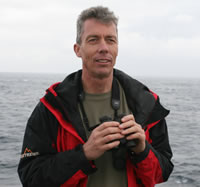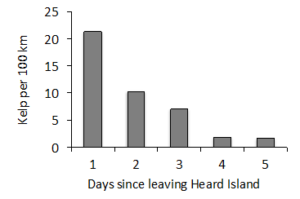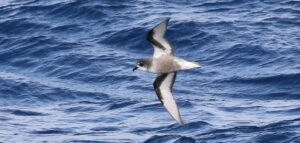 By Peter Ryan, onboard scientist, expert in general ornithology, seabird-fishery interactions, evolutionary ecology, marine debris, solid waste management, biology of oceanic islands.
By Peter Ryan, onboard scientist, expert in general ornithology, seabird-fishery interactions, evolutionary ecology, marine debris, solid waste management, biology of oceanic islands.
Leg 1, Day 24.
Birds continued in much the same vein as yesterday, with lots of shearwaters (probably commuting through), and only a smattering of other species, many of which are non-breeders in moult:
| Short-tailed Shearwater | 700 | Antarctic Prion | 40 |
| Diving petrel spp. | 35 | Fairy Prion | 20 |
| White-headed Petrel | 12 | Mottled Petrel | 12 |
| Black-bellied Storm Petrel | 4 | White-chinned Petrel | 2 |
| Fulmar Prion | 2 | Wandering Albatross | 1 |
| Southern Royal Albatross | 1 | Black-browed Albatross | 1 |
| Northern Giant Petrel | 1 | Wilson’s Storm Petrel | 1 |
No cetaceans were seen. According to Nicolas, primary production is low due to iron limitation in the area, which explains the paucity of life.
 Bull Kelps Durvillaea antarctica were still encountered drifting at sea, but the density has decreased steadily since leaving Heard Island. The last plant seen this afternoon was >2500 km from Heard.
Bull Kelps Durvillaea antarctica were still encountered drifting at sea, but the density has decreased steadily since leaving Heard Island. The last plant seen this afternoon was >2500 km from Heard.
